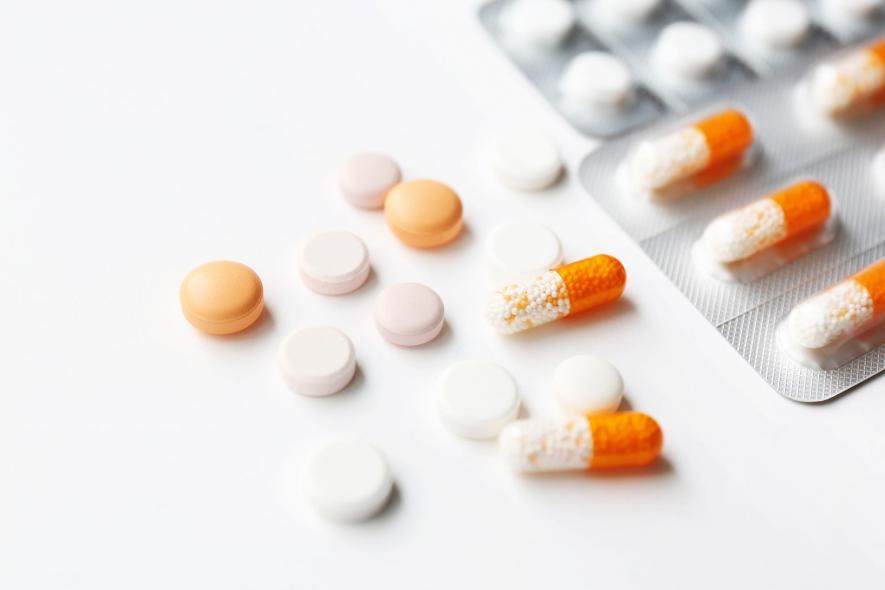Don’t Just Fix Prices, Treat Drug Regulation as Basic Public Good: Health Expert on Cough Syrup Deaths

Image for representational purpose. Credit: Guidelines
The World Health Organisation recently said the death of 66 children in the Gambia was linked to their consuming cough syrups made in India. When officials of the central and State-level drug regulators inspected the private drug manufacturing unit in the Sonipat district of Haryana, they found 12 defects in its manufacturing processes. The plant has been sealed for now, but the tragedy raises questions—and not for the first time—about Indian drug manufacturing. In particular, how well are drug-makers regulated in India and are patients safe? NewsClick asked T Sundararaman, former global coordinator of the People’s Health Movement and former executive director of the National Health Systems Resource Centre in New Delhi, about the nature of oversight of drug makers in India, especially since medicines are also a significant export for India. Edited excerpts:
How seriously does India take its responsibility to assure the quality of medicines for the internal and external markets?
Not very seriously, I am afraid. A few State public health systems have robust verifications of the quality of medicines for every batch purchased—and this is why there are almost no issues in these States, for example, Tamil Nadu, Rajasthan, Kerala, and perhaps some others. The quality regulation for drugs manufactured by the private sector in India for Indian consumers is negligible. One reason is the false perception that brand names and big names in the private sector provide quality drugs—therefore, not much else is required. The other reason relates to the architecture of Indian pharma regulation. There is a reasonable arrangement for regulating the quality of imported drugs. But for both local consumption and drug exports, the regulations are feeble. Given that the major portion of drugs is sold in the private market, the population is very at risk.
What is the strength of the regulatory bodies, and are there any reviews of their functioning?
The Central Drugs Standard Control Organisation, or CDSCO, is the main regulatory body at the national level. It is a subordinate office of the Directorate General of Health and Family Welfare under the Union Ministry of Health and Family Welfare. Legally, it enjoys very limited or no autonomy. There may be some autonomy in practice, but it is far from adequate. Regulation works best if the regulator is at arm’s length from the ministries. That helps insulate regulators from different sorts of pressures. The government can have enough say to ensure accountability—but not more.
The CDSCO has explicit powers over the quality of imported drugs. But State drug authorities are responsible for locally manufactured drugs and exports. These State authorities are not under the national drug authority. There has never been any insistence on this, which is surprising—though there can be reasons to support this. However, the CDSCO, as the national drug authority, still has the responsibility to ensure each State authority is functioning according to the standards and has the capacity to do so.
In this case, [death of children due to consuming cough syrup made in India], the drug control administration in Haryana dropped the ball—but the effects are being felt across India. Thirdly, the processes of regulation are poorly implemented and also relatively weak.
There were previous complaints about the company in Haryana that manufactured the cough syrup. How did it continue its work, and how was it allowed to export medicines?
The fragmentation of regulatory and oversight authority is one of the reasons. Fragmentation makes it easy for the chain of culprits to hide. Even now, though the drug manufacturer would be held accountable (hopefully), it is difficult to see which regulatory or governance official would be held to account for negligence or at least vicarious responsibility.
Earlier, drug-maker Ranbaxy was acted on and penalised by the pharmaceutical regulatory agency in the United States. Does it mean we take western markets more seriously and believe third-world markets require no monitoring before we export medicine to them?
Everywhere, the presumption is that it is the job of the purchaser to ensure the quality of the drugs. And if they go for drugs that are ‘too cheap’ and avoid corporate-manufactured medicines, so be it; they ‘deserve’ what comes to them. Why else is it that only some State public health systems, not all, make quality assurances mandatory? Similarly, why do some countries and not others have regulatory systems? The issue is that no one should get a poor-quality drug, whatever its price, or brand image. It means treating drug regulation as one of the most basic public goods, not merely a mechanism of fixing prices right for markets to act.
What are the long-term implications for the Indian pharmaceuticals industry, our one success story for indigenous development and export? How have Indian pharma bodies responded to this tragedy?
The recent deaths of children in the Gambia will adversely impact the Indian pharma industry. But do note that the Indian pharma industry has been systematically losing out on many markets. It is time we understood that when it comes to the design of healthcare systems, no one is safe if everyone is not safe.
Get the latest reports & analysis with people's perspective on Protests, movements & deep analytical videos, discussions of the current affairs in your Telegram app. Subscribe to NewsClick's Telegram channel & get Real-Time updates on stories, as they get published on our website.














